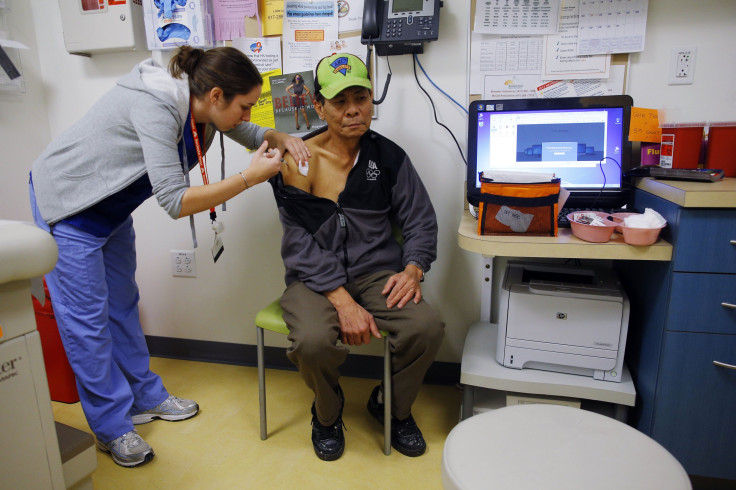Government Shutdown And Flu Season: CDC Influenza Monitoring Furloughed, But States (And Google) Still Keep Watch

As flu season starts to edge into view, the federal agency responsible for monitoring its spread across America is hamstrung by the government shutdown. But state health departments say that, for the moment, vaccine supplies are uninterrupted and in-state monitoring continues.
The U.S. Centers for Disease Control and Prevention is still keeping some employees working to man its emergency operations, but a number of programs are not sustainable during the shutdown. One of those programs is FluView, the CDC’s weekly compilation of influenza monitoring data.
Thankfully, it’s still early in the flu season. If the shutdown “had been in February, for example, when we actually identify what goes into the new flu vaccine, there probably would have had a much bigger effect,” says Stephen Morse, an epidemiologist at Columbia University.
None of the 16 state health departments that responded to inquiries by Friday afternoon were seeing major short-term impacts on their flu preparations due to the shutdown. Vaccines bought by both private providers and government agencies were purchased months ago, and states are receiving their shipments on schedule. The federally funded Vaccines For Children program that provides immunizations for flu and other preventable diseases free of charge to uninsured, Native American and Medicaid-eligible children is an entitlement program unaffected by the shutdown. And state health agencies are continuing to keep watch for the arrival of influenza in their borders.
“Flu maps and many of the tools the CDC produces are populated with state data,” says Laurie Forlano, the deputy state epidemiologist for the Virginia Department of Health. “Our surveillance of Virginia continues, and our systems are still fully operational, but we won’t have that nationwide picture temporarily.”
CDC spokesperson Barbara Reynolds points out that the nationwide picture is particularly helpful in helping states figure out if they’re having a tougher flu season than neighboring states. Once the shutdown ends, federal health officials will be able to retroactively update FluView. But how long the furloughs last will determine how long the CDC will have to spend sorting through the backlog of flu data, Reynolds says.
“The $64,000 question is, of course, when are we going to get up and running again?” Reynolds says.
One worry -- albeit unlikely -- is the possibility of some new bug arising during the shutdown. Ed Barham, a spokesperson for the Arkansas Department of Health, says that the lack of a fully staffed CDC is concerning. The agency’s lab in Atlanta does a lot of the grunt work in identifying new strains of flu that crop up throughout the year.
“If something new were to come along, we don’t have that support,” Barham says.
Meanwhile, there are other ways to indirectly track flu activity across the country. Google Flu Trends tracks how often certain flu-related search terms are entered into Google. Interestingly, the rise in flu searches tends to track the rise in flu cases throughout the season.
“Because the relative frequency of certain queries is highly correlated with the percentage of physician visits in which a patient presents with influenza-like symptoms, we can accurately estimate the current level of weekly influenza activity in each region of the United States, with a reporting lag of about one day,” Google employees and CDC epidemiologist Lynnette Brammer wrote in a paper for Nature in November 2008.
Ultimately, the real power to control the spread of flu rests with average Americans.
“The federal shutdown does not prohibit someone from getting their flu shot,” Forlano says. And it doesn't stop anyone from washing their hands.
© Copyright IBTimes 2024. All rights reserved.











